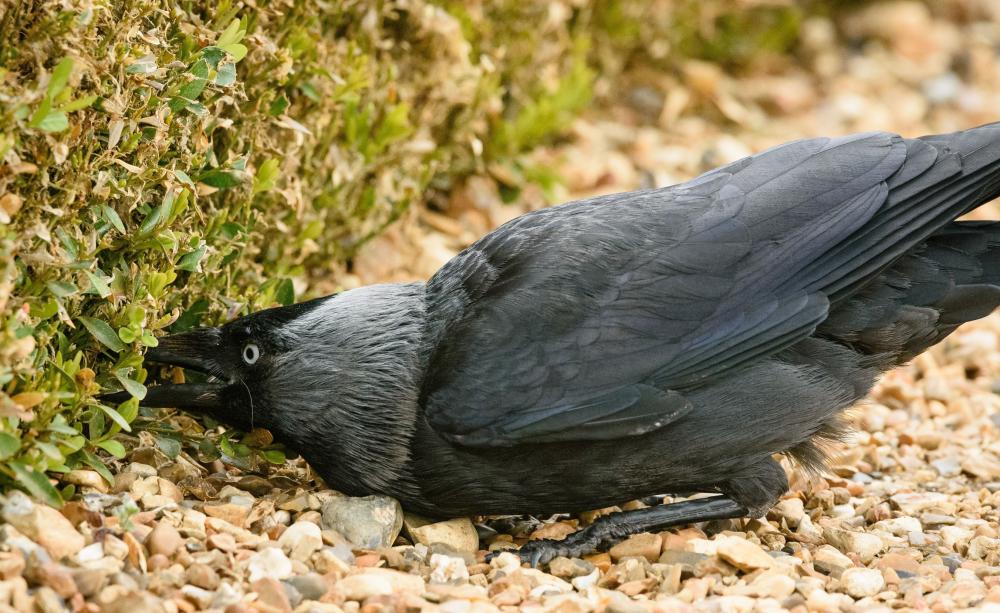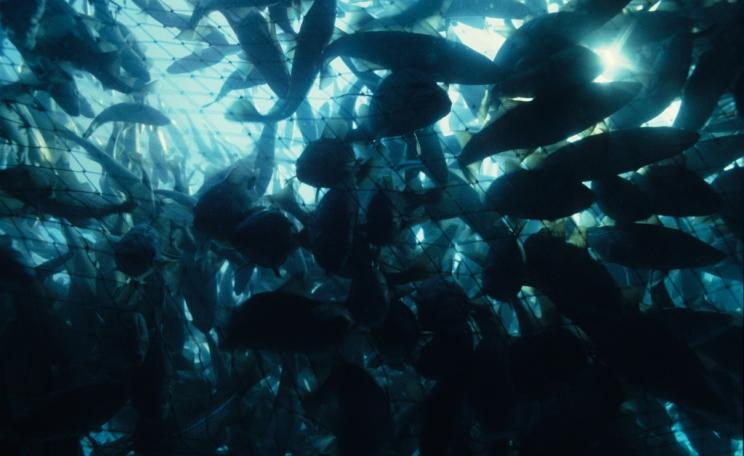We first noticed jackdaws plucking caterpillars from the box hedges in May, which was fantastic to see, but I thought it might be a one-off.
Historic gardens fighting against an invasive caterpillar that destroys formal box planting may have a new ally in the form of jackdaws, the National Trust has said.
The box tree moth is a destructive pest of the plant.
The insect is a native of East Asia and first turned up in the UK in 2008, with its larvae reported in private gardens in the home counties by 2011.
Patrolling
Its caterpillars feed voraciously on box plants under a blanket of pale, fine webbing that can cover infected plants.
Historic gardens such as Ham House in Richmond, London, where box forms a key part of the formal planting, have been badly hit by the bug, as have domestic back gardens, particularly in the south-east of England.
But the National Trust, which looks after the 17th century Ham estate, said jackdaws have been feasting on the caterpillars, alleviating fears that the insects are unpalatable to native predators.
Ham House's kitchen garden was badly damaged during the first life cycle of the caterpillars - which can strip hedge of its leaves before attacking the wood and causing the plant to die - in the spring.
But with the help of around 10 jackdaws - a type of small black crow - regularly patrolling the hedges and picking off the insects, the box has partly rejuvenated, the Trust said.
Plucking
The birds returned to the box hedges in August as the next cycle of caterpillars emerged.
Gardeners at the estate, which has been managed organically for more than a decade, are now exploring ways to encourage jackdaws and other birds into the garden, such as looking at the way they prune the hedges.
There is almost two-thirds of a mile of box running through the Ham estate, including in the walled kitchen garden and the cherry garden, with its formal box parterre filled with lavender, box cones and dwarf hedging.
Rosie Fyles, head gardener at the National Trust's Ham House, said: "We first noticed jackdaws plucking caterpillars from the box hedges in May, which was fantastic to see, but I thought it might be a one-off.
Hedges
"Box hedging is an iconic part of the garden at Ham, and with so much of it, the threat of damage from the caterpillar was huge. So we were thrilled when the birds returned in August for the next life cycle.
"We had wondered if the caterpillars would be unpleasant or even poisonous to native birds - but the jackdaws have clearly developed a taste for them. It's early days, but it's a really encouraging sign that there may be a homegrown solution yet."
She added that the jackdaws were most effective on hedges which had been partially stripped of leaves by the caterpillars and contain bigger holes.
"We're now looking at ways to prune the hedges in a more open style, that allows increased air flow and gives the birds easier access to the caterpillars."
Insecticides
Elsewhere, the Royal Horticultural Society says there have been reports of birds such as tits feeding on the caterpillars in some locations, but it is not yet clear if the predators will be able to reduce box tree moth numbers.
Starlings have also been witnessed targeting infected box hedges.
If birds do have a taste for the caterpillars, it could help reduce the work load for professional and amateur gardeners, who have been advised, where practical, to remove the caterpillars by hand.
Other options include pheromone traps, nematodes or insecticides - but these require forceful spraying and should not be done when plants are in flower due to the threat to pollinating insects, the Royal Horticultural Society said.
This Author
Emily Beament is the PA environment correspondent.







